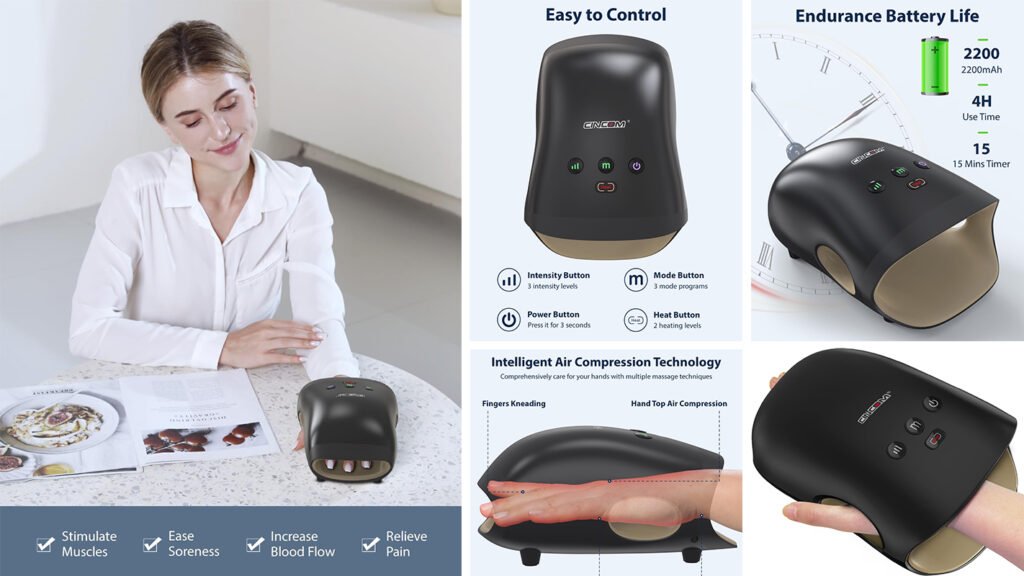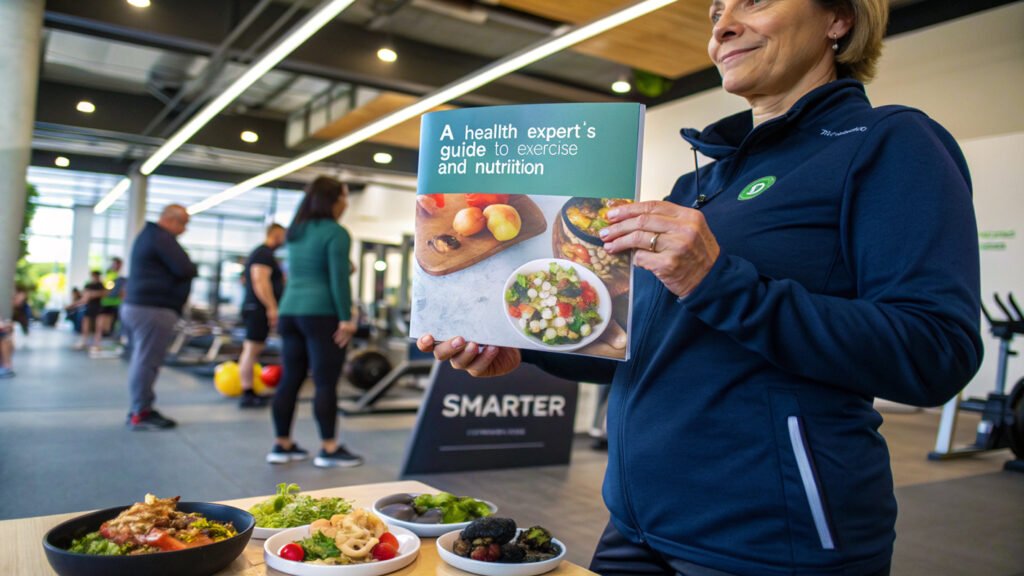Cheap Healthy Meals: Simple and Delicious Recipes for Every Budget
Most people see eating healthy as a luxury — something for people who have big pockets and time on their hands. So what if I told you that Instead of “Eating Healthy On A Budget” it’s not only possible but also really very easy? From being a busy professional to a college student or working on a tight budget, you should be able to find “cheap healthy meals” somewhere. By being smart with our planning, creativity, and shopping we can afford meals that are both nourishing.
Table of Contents
Toggle
How often have you found yourself in a rut of only eating super expensive food being delivered or raw or otherwise processed foods because you believed cooking healthy meals at home to be too expensive or time-consuming? You’re not alone. But the fact is you don’t have to sacrifice health for your wallet. Here’s how to get it to happen, by making it a habit to make ‘budget-friendly cheap healthy meals’ every day.
So, where do you start? It’s a simple question that helps when you’re asking yourself how you can use everyday ingredients to make flavorful, wholesome dishes that won’t cost an arm and a leg. No matter what their budget may be, we’ll break it all down for you – from when to use “meal prep” as a time-saving trick to the best “affordable staples” I’m ready to help you turn your kitchen into a low-cost, cheap healthy meals central. Let’s dive in!
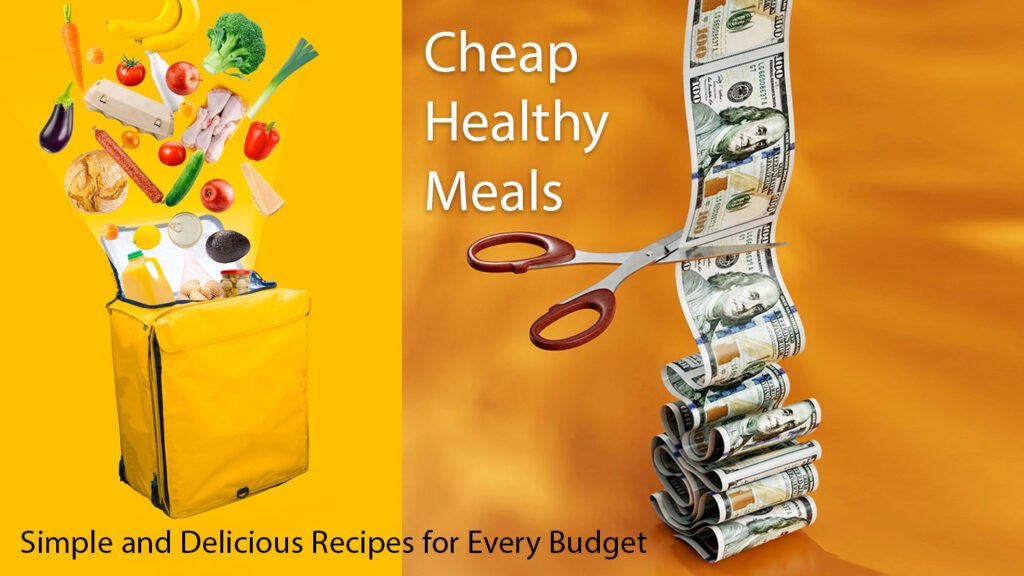
Why is it Possible to Eat cheap Healthy meal on a Budget?
You’ve probably heard it before: eating healthy is expensive. But is that really true? Is there really a sustainable way to eat a healthy diet without constantly spending a small fortune at the grocery store? Yes, you can eat healthy on a budget—and as easy as it sounds, it can be surprisingly easy if you know the basics of shopping smart and planning meals.
We’re going to analyze why healthy food is typically so expensive, and prove to you how to turn that myth on its head.
Perception of Expensive Healthy Food
Healthy food can be expensive but often it is assumed as organic produce, grass fed meats and superfoods that are only cooked in specialty value foods. Sadly though, these aren’t the only healthy food alternatives available. Don’t believe me? The truth is healthy eating doesn’t have to be expensive itself. It’s about making the right choices and knowing where to buy.
How To Save Money While Eating Healthy.
There is no need to give up on nutrition for savings. In fact, “simple whole ingredients” are what usually build “budget friendly healthy meals”. If you follow a few selected key strategies, you can eat your wholesome meals with no spending doing your part to save money while simultaneously eating beneficial food. Here’s how:
Plan Your Meals Ahead of Time:
Healthy eating on a budget is built on meal planning. Planning your meals ahead of time will prevent impulse buys as well as prevent food waste. The second way to do it is that if you know exactly what you need, you can buy what you’ll use but not everything else, saving money as well as time.
Shop Smart, Shop Seasonal:
Fresh fruits and vegetables aren’t very expensive and taste better in season, so shop for them as they become available. Both of these not only save money, but they also help local farmers.
Buy in Bulk and Freeze:
Buying whole grains, beans, and legumes in bulk is usually cheaper per serving than they are in smaller quantities. Plus, they all have a long shelf life and there’s no need to refrigerate them, they can sit in your pantry or freezer for months. For meats like chicken or fish, the same goes for you, you can buy larger portions then freeze them and use them as needed.
encompasses Frozen Produce:
It can get expensive when you’re buying fresh vegetables or fruits out of season. “Frozen vegetables are just as nutritious, are less expensive and have a longer shelf life”. Frozen veggies and fruits are a great option for smoothie, stir fry and soup without blowing your bank account.
Reduce Meat Consumption:
Most meals consist of meat, which is often the most expensive part of any meal. Instead, think about switching to plant based proteins, such as beans, lentils and tofu, in place of meat. In addition to being much cheaper, they also have a nutritional punch with fiber, protein and important vitamins.

The Real Cheap Healthy Meal Way to Eat
Eating healthy isn’t just good for you, it’s also great for your money. Regarding the nutrition side, you are not just nourishing yourself, but with “Affordable healthy food” you are preparing yourself for long-term financial success. Investing in high-quality ingredients will keep you out of the fast food yearning and you won’t spend your money on convenience meals.
It really isn’t that hard to eat healthy on a budget once you get a little done upfront to plan, shop, and prep. You will eventually start to feel great both physically and financially, and you will be shocked because this will become your new normal.
If you’re wondering how to access Cheap healthy meals at a reasonable cost, you’re certainly in the mood to give it a try. In the next sections of this guide we’ll go into specifics ‘meal ideas‘ and ‘tips for smart shopping,’ so stay tuned!

Budget-friendly cheap healthy meal ingredients
Can tailor meals for budget cooking but they do make or break a meal when you’re cooking on a budget. The good news? Even though you can eat well without going shopping at high end stores and paying for superfoods, you can! In fact, affordable staples can be used to build many nutritious meals.
You can make the most out of your busy lives by the trendy yet low-budget ingredients to make a wide range of healthy dishes.
If you want to make **cheap healthy meals** a regular habit, let’s look at some of the things in your shopping basket that you should be adding.
1. Whole Grains: The Unsung Heroes of Budget Cooking
And grains like rice, quinoa, oats, and barley are not only budget friendly but oh so versatile. This is where they have formed the base for many meals, providing bulk and nutrition at virtually no price. Plus whole grains are high in fiber to keep you satisfied longer and not snack between meals.
Brown Rice: Akin to being an inexpensive and nutrient dense option. Use it as a side dish or stir fry or in grain bowls.
Oats: Great to serve as breakfast or even substitute as a binder to veggie patties.
Barley: Soups, salads, stews great. It’s hearty, filling and economical.
2. Beans and Legumes: Protein Powerhouses on a Budget
Beans and legumes are your best friends for ‘budget friendly healthy meals’. They are incredibly cheap Healthy Meals, packed with plant based protein, fiber and essential vitamins, and they are incredibly versatile. Beans are easy to add protein to something without overhyping it and making it spendy, no matter if you’re making tacos, chili, or even heaping up a salad.
Canned Beans: Fast, cheap, and easy to use. When you can, opt for low sodium varieties.
Lentils: Great as a base for veggie burgers or as a soup or stew ingredient. They are inexpensive and they cook quick.
Chickpeas: Add them to salads, curries or make your own hummus for a snack full of health benefits.
3. Frozen Vegetables: Freshness Without the Price
Shopping out of season can be very costly on fresh produce. The first: “frozen vegetables”, they’re usually more affordable and nutritionally it’s the same as their fresh counterparts. However many frozen veggies are flash frozen at a prime and nutrients are locked in. But they’re also convenient and their shelf life is longer, resulting in less food waste.
Frozen Spinach: An addition to smoothies, soups, and pasta dishes.
Frozen Peas and Carrots: And they’re easy enough to add to stir-fries, casseroles, and what have you, or they can be a very quick side dish.
Frozen Mixed Veggies: Good for stews or veggie-packed fried rice a perfect choice.
4. Affordable Fresh Produce: Shop Smart, Save Big
Frozen vegetables are a great option, but there’s still room for finding room on your list for fresh produce, if shopping seasonally. Fruits and vegetables that are in season are cheaper, and better tasting. When you shop for produce, buy in bulk or buy on sale when it’s available.
Sweet Potatoes: It’s a nutrient packed, filling, and affordable vegetable that is also versatile! Roast or mash them or add them to your soups.
Carrots: In stews, salads, and as a simple snack, easy, long lasting, inexpensive.
Bananas: Ideal for smoothies, oatmeal, or as a snack, a cheap source of natural sweetness.
5. Affordable Proteins: Stretch Your Dollar
But while meat can be a budget buster there are plenty of ways to add protein to your diet, without breaking the budget. Not only is plant based protein great, such as beans and lentils, but you can stretch (and save) your budget by adding more less expensive animal proteins like eggs and canned tuna.
Eggs: One of the cheapest sources of protein. Fry, scramble or use them in baking.
Canned Tuna: A great addition to salads, on sandwiches, or in pasta dishes. Find lower calorie versions packed in water.
Tofu: Versatile and affordable plant based protein. Stir fry, soup or use in place of meat in tacos.
6. Herbs and Spices: Flavor Without the Price
If you’re looking for a cheap, yet tasty way to spice up your meals, take a gander at spices. However, having a well-stocked spice rack can turn simple dishes into gorgeously gourmet dishes. When you can buy spices in bulk, do so to save money, and when you do, mix things up a little with different combinations to keep your meal exciting!
Garlic and Onion Powder: Staples to have on hand in the pantry in order to enhance a dish.
Cumin and Chili Powder: Works well for curries, chili, and Mexican-style dishes.
Dried Herbs: Basil, oregano, and thyme are great when added to sauces, soups, and roasted vegetables.
7. DIY Snacks: Healthy and Inexpensive
If you’re making your own snacks, it’s usually cheaper and healthier than buying prepackaged options. Snacks can be simple, though, and they don’t have to cost an arm and a leg.
Homemade Granola: Makes a cheap, healthy snack using oats, nuts and a little of honey.
Roasted Chickpeas: Eating can fill you with protein — just season it with your favorite spices after which season seasoning!
Popcorn: A low-cost, convenient to make whole-grain snack that can be flavored however you like!
Conclusion
This will allow you to pack up your pantry with nourishing ingredients without spending big bucks. Using some creativity and planning, these ingredients can work together to make many different meals that are not only healthy but also can be many different meals that are not only healthy but also satisfying. you are looking for a filling bowl of comforting grains, a substantial salad, and a protein-packed bowl or making a hearty stew, whatever you need these staples are the basis of your ‘cheap healthy meals’.
Get ready to create your grocery list. Now we will go on to the next part of this series where I’ll show you some simple, tasty meal ideas that you can make with this same stuff!
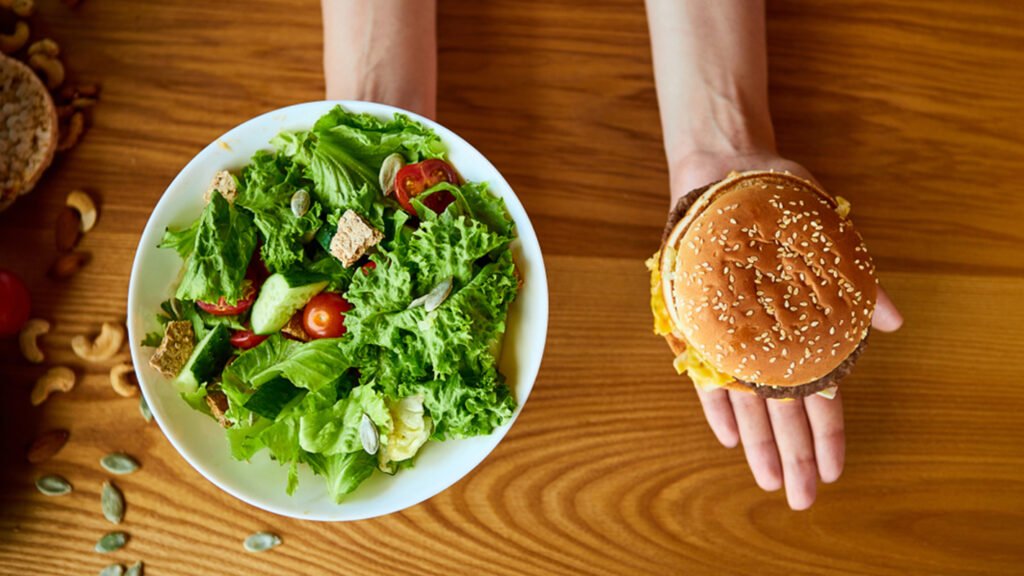
Simple and Cheap Healthy Meals Ideas
When you’re cooking ‘cheap healthy meals’, simplicity is absolutely essential. You don’t have to have fancy recipes or spend loads of money on ingredients to make appealing and nutritious meals. In fact, some of the tastiest meals are the simplest: full of flavor, inexpensive to produce, and easy to prepare.
So let’s explore some meal ideas you can cook to get the most out of your “budget-friendly healthy foods” without sacrificing your taste buds.
1. One-Pot Wonders: Easy and Minimal Cleanup
Cheap healthy meals don’t need to be complicated or too much of a hassle to make – one pot meals are easy on your pocket and easy on your mind. When you combine many ingredients in one pot, it’s a win on cooking time AND cleaning up!
Vegetable Stir-Fry: A quick, colorful dish that’s packed with fiber, vitamins, and minerals. Frozen mixed veggies (use peas, carrots, and bell peppers) with brown rice, some soy sauce, garlic and ginger, and you have a complete meal.
Lentil Soup: Plant based proteins and fiber are numerous, including lentils. Stuff your tomatoes, onions, garlic, and spices into some canned tomatoes and then team them up with some combine them with some hearty, satisfying soup that will stretch out to several meals.
Chili: This deft dish of ground meat with beans and veggies if desired is a classic, budget-friendly dinner.
Instead of beef, use kidney beans, black beans, or lentils for your protein, and simmer with tomatoes, onions, chili powder and cumin for a delicious, hearty fare that reheats well.
2. Simple Grain Bowls: Build Your Perfect Meal
One of the quick, customizable, nice-to-have meal options is grain bowls, which can be made with minimal ingredients. Come up with a whole grains base (cooked) such as quinoa, brown rice, or barley, and add your chosen vegetables, protein, and dressing to start. Here are a few ideas to get you started:
Mediterranean Grain Bowl: The star of this food pyramid was cooked quinoa or brown rice served with a side dish of hummus, roasted sweet potatoes, cucumber, cherry tomatoes olives, and finished off with a dash of olive oil. To the salad add some chickpeas or if you prefer grilled chicken meat.
Veggie and Tofu Bowl: Tofu can be lightly browned with soy sauce, garlic, and ginger and served over a bed of brown rice or quinoa. For an Asian feeling, just add some steamed broccoli, shredded carrots and place some sesame dressing on it.
Mexican-Inspired Bowl: Take brown rice or quinoa and mix it up with cooked black beans, corn, chopped avocado, salsa, and a ring of lime juice. You can add grilled chicken or tofu to the dish in order to increase protein quality.
3. Quick and Healthy Breakfasts
There are so many meals that one can wake up in the morning prepare a meal and have it for breakfast without stressing himself up or spending lots of cash. Here are a few that are cheap as well as can be healthy for you plus they will cater for your breakfast needs throughout the morning.
Overnight Oats: The first meal of the day should be a healthy breakfast, and the best type of breakfast is one that doesn’t require cooking. In a bowl, combine oats and almond milk or yogurt then you can add fruits, nuts or chia seeds on your oats. Let them soak overnight and then rush out and grab them on your way.
Veggie Scramble: Since eggs are cheap, in the morning one can have eggs and some sautéed veggies like spinach, onions, and bell peppers, making a healthy and filling breakfast.
Smoothie Bowl: Bananas or berries can be blended and poured onto a bowl for one’s Frozen Fruit Smoothie Bowl. Just add a handful of spinach for greens, and sprinkle on top of the granola and nuts to get a good breakfast meal that is also easy to prepare.
4. Affordable Snack Ideas
Healthy snack foods do not need to be costly, in fact, home preparations are cheaper and even healthier when compared to branded or packaged products. Here are some simple snacks that are both satisfying and wallet-friendly:
Homemade Granola Bars: From oats, peanut butter, honey, and dried fruits you can easily and quickly prepare your granola bars at home. They’re fine for consuming a snack on the road or whenever some fast carbohydrates is desired.
Roasted Chickpeas: Drain chickpeas, coat them with olive oil and spices and bake until they turn crunchy and provide the body with lots of protein. You can sprinkle them with just about anything including paprika or cumin, or sprinkle on some garlic powder.
Veggie Sticks with Hummus: These can be comprised of some vegetables like carrots, celerity, or cucumbers, which are cheap snacks as well. Serve it with homemade or bought-ready hummus to make it a healthy meal for your stomach.
5. Simple Soups and Stews
Whereas, soups and stews are great “affordability healthy meals” that can be prepared in bulk and served severally in a week. They’re also easily extendable whereby you can substitute whichever vegetables and grains that you have.
Vegetable Soup: Minced meat cooked with a combination of whatever vegetables are available at the moment or on offer: carrots, potatoes, onions, greens, etc., together with a portion of lentils or beans. If you add ingredients such as thyme and rosemary to your food, you are assured of an excellent healthy, warm meal.
Split Pea Soup: Rich in protein and fibre this is a humble soup made entirely from split peas. We now add carrots, onions, garlic, and vegetable broth and you have a meal that will serve for a number of days.
Chicken and Rice Soup: If you are not a total plant eater, then use up the chicken that is left, cook more rice, and chop up any vegetables you have. It is a good way to make them more portion-controlled and to use the leftovers you have.
6. Creative Leftover Meals
Perhaps, one of the simplest ways of preparing **inexpensive, nutritious meals** is by repurposing leftovers into something different and pioneering. Here are a few ways to get creative with what you’ve already made:
Fried Rice: You can easily turn it into another dish by reheating the rice and then sautéing it with whatever is leftover in the kitchen. Drizzle soy sauce, add sesame oil, and beat an egg, if you want to have it faster as stir fry.
Wraps and Tacos: Uncooked elements of grains, beans, and veggies can just as well be easily incorporated into a wrap or a taco. To make a little more yummy, add a little salsa, avocado, and a few drops of lime juice.
Veggie Frittata: An entertaining idea for using leftover roasted vegetables is to make a frittata. Some can beat eggs with a few spoons of vegetables fry and add them to a pan, let it cook until the eggs are solid enough.
As for these basic, or as they may well be termed “cheap healthy meals” cooks do not always have to slave in the kitchen or pay a hefty price for nice meals. The secret is to pay attention to whole, cheap food and look for ways to key on them. And therefore, which meal are you going to prepare first? I hope these ideas help motivate you to begin cooking your own inexpensive yet nutritious meals right now!

Tips to help you achieve your body and wallet’s goals of eating cheap healthy meals on a budget.
It is not easy to stick to ‘healthy eating on a constrained diet’ when the time arises and so many distractions are around. it is a drive-through to get the required burger late at night, or the convenience of having a ready and packaged meal, looking healthy, and staying healthy demands such strategies. But do not panic – it is not a requirement for you to be a model citizen at all times. It is all about developing practices that are likely to keep you on the right side for the rest of your life without spending a lot.
Now that you know the key principles of healthy affordable meals, let’s look at the practical ways to keep you on track and achieve your goals.
1. Summary of the Key Message Set Realistic Goals and Expectations
The first pillar to ensure people stay on their chosen path is to ensure that they set good goals and objectives. If your goal is to dramatically change your eating habits from one day to the next it is very likely you will be discouraged easily. Hence, it is advised to start with small goals and work consistently in their direction, step by step. Here are some ways to do that:
Start with One Meal: Make the goal to prepare “healthy meals at home” for one meal a day, it can be breakfast, lunch or dinner. When you are familiar with this, then move to the next level of preparing more of your meals at home.
Set a Weekly Budget: Go through the grocery bill and establish a weekly spending limit for good healthy foods. This make it easier for you to stay within your budget and at the same time makes you have to be strategic.
Focus on Small Wins: Take wins in your relationships even if they are small ones. From preparing a healthy meal at home or avoiding a mid-noon unhealthy snack these little steps create the foundation towards positive sustainable change.
2. Keep a Well-Stocked Pantry
Having lots of antecedent foods that can be prepared in different ways is your ace up your sleeve Regarding healthy eating for cheap. When there are cheap and healthy food items available, it becomes less pleasing to order takeaway foods instead of preparing meals. Here’s how you can keep your pantry stocked for success:
Essentials: It is essential to stock on “whole grain” products such as; brown rice, oats, quinoa etc, “canned beans”, and “frozen vegetables”. These ingredients are the staples of numerous nutritious and cheap meals.
Healthy Oils and Spices: When it comes right down to it, basic ingredients such as olive or coconut oil, and spices such as cumin, paprika or garlic powder serve to make plain ingredients fun and interesting without costing much.
Frozen Protein Options: Frequently pre-cooked chicken, fish or tofu, edamame are less expensive than their fresh counterparts and do not spoil quickly, resulting in less wastage.
3. Meal Plan and Prep in Advance
The biggest challenge to the preparation of Cheap healthy meals is lack of time in the kitchen. That’s where meal planning and prepping comes into the picture. Once a week plan out and prepare meals so you always have “healthy meals ready to go”, irrespective of the fact that you are a busy professional or a mother juggling her job and home.
Make a Weekly Plan: Every week, take one Sunday evening and deduce, in advance, what you will be eating for the week. They canChoose basic and cheap meals so you don’t spend money on many condiments and other products you use only occasionally. This way be sure to use the leftovers and avoid preparing meals every single day.
Prep Ingredients: In case you are pressed on time, you should take some time and prepare all the ingredients you will need. Some of cooking for the week includes preparing vegetables, preparing grains, and preparing portioned snacks.
Batch Cooking: Prepare more portions for your meals to reduce reheating times, store them at the fridge or freezers in the house. And meals like soups, stews and casseroles are created perfectly for such a style!
4. Shop Smart and Stay Organized
Grocery shopping is not such a fun chore at all, most especially when you need to keep a check on the amount of money being use. Still, you are always in a position to optimize your spending, as well as exclude violations of your desire’s impulsive nature. Here are some tips to help you shop smarter:
Make a List and Stick to It: You should then decide on the food to purchase and make a list of exactly what is required at the store. Following the list ensures that one does not be drawn to the attractive items that one would have otherwise afford but are not actually needed.
Shop the Sales and Discounts: Buy groceries during a special offer, use coupons, and discounts in grocery stores to save money. It means that whenever there is a chance to purchase large quantities of foods such grains, beans, and frozen vegetables, you should do so in the belief that it will help you to save money in the long run.
Avoid Convenience Foods: There is nothing as easy as taking processed foods I concede, but they are costly and unhealthy as compared to making foods from raw ingredients. Try to avoid processed foods as often as you can.
5. Get assistance and be answerable
Compliance can be greatly enhanced simply by having the kind of support and accountability that many otherwise overlook. It could be a friend, a family member or even an online community With such encouragement in place one can be motivated to continue.
Inform a friend or a family member about your own healthy eating plan this will ensure that they keep you on check and in some cases they can accompany you to the market for groceries or even help prepare a healthy meal for the entire family. cooking Cheap healthy meals.
Join a Healthy Eating Community: A support group or a group on any social media platform where people post inspiring stories could be helpful. Give suggestions and ideas, as well as pass on or read of other people’s experiences to others on the same diet plan.
Track Your Progress: Shoes your food intake and maintain at least a simple journal or try an app for logging your meals. If you keep count of the meals you take, you will be able to make modifications in the required times.
6. Allow Yourself Flexibility
A general point to note is that is important to understand that eating healthy does not equate being perfect. Life happens – there will be days when you’re too busy to cook, or when you indulge in a treat. That’s okay!
Enjoy Treats in Moderation: Eating a healthy diet is not about starvation. It may not be too much of a stretch to say that a little bit of pizza and/or a little bit of cake won’t hurt you. The key is moderation and moderation only.
Be Kind to Yourself: If you go wrong, do not get angry with yourself. You just get back the following day back on track. Maintaining a nutritious diet is a process and not an event?. It’s being better than we used to be, not better than somebody else.
Healthy eating does not have to be expensive; it is about sticking to your ‘budget friendly Cheap healthy meals’ at least most of the time. It is possible to achieve value for your money and at the same time feed on healthy foods by following the following tips; Just be aware that when you want to achieve a huge change, even the smallest modifications may significantly improve the outcome. So, start with making baby steps; it is okay to be happy about even the smallest of victories.
Do you know it is now time to be able to escalate your healthy eating further? With these tips, adopting a healthy eating lifestyle will be less of a hassle and much more affordable to incorporate into your meals plans.
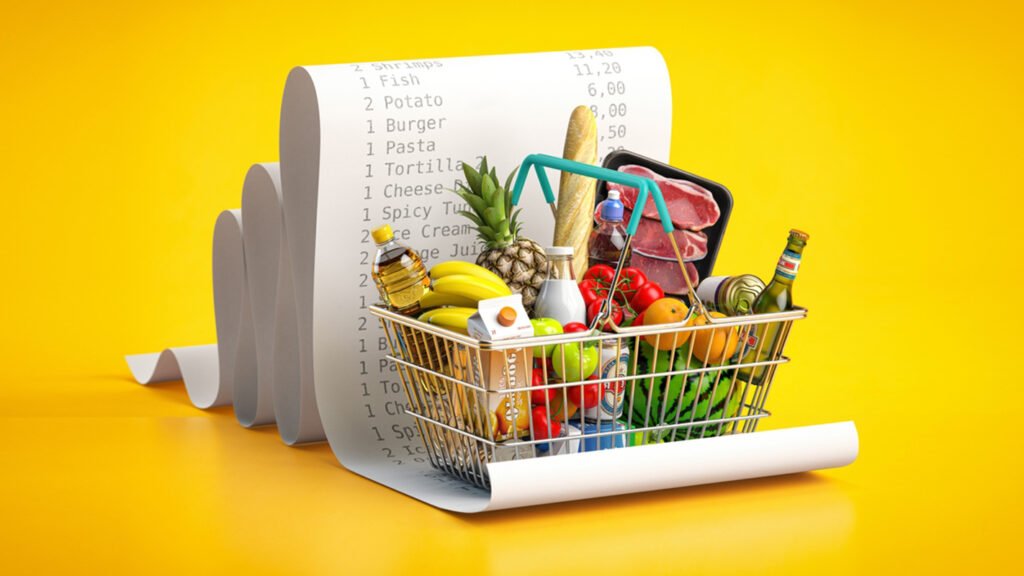
How to Make Healthy Meals More Affordable Without Compromising Quality
as for eating healthy, many people assume that it’s too expensive to maintain a nutritious diet on a budget. The good news is that “eating healthy meals on a budget” is not only possible, but it can also be incredibly rewarding. With a few simple strategies and a little planning, you can enjoy delicious, wholesome meals without sacrificing quality or your finances.
So, how can you make “healthy meals affordable” without cutting corners on the ingredients that matter most? Let’s explore some practical tips to help you save money while still enjoying top-notch, “healthy meals”.
1. Focus on Nutrient-Dense, Budget-Friendly Ingredients
The key to eating healthy without overspending is choosing ingredients that pack the most nutritional value for your dollar. By focusing on “affordable healthy foods” that offer a lot of bang for your buck, you’ll get more nutrients per serving while keeping costs low.
Beans and Lentils: These plant-based proteins are inexpensive and loaded with fiber, vitamins, and minerals. You can use them in soups, stews, salads, or as a meat substitute in many dishes.
Frozen Vegetables: Fresh vegetables are great, but frozen options often offer the same nutritional benefits at a fraction of the cost. Plus, they last longer, reducing food waste.
Whole Grains: Brown rice, quinoa, barley, and oats are not only affordable but also provide complex carbohydrates, fiber, and essential minerals. They’re versatile and can be used in everything from grain bowls to baked goods.
Eggs: As one of the most affordable sources of high-quality protein, eggs are perfect for breakfast, lunch, or dinner. You can scramble them, boil them, or add them to soups and stir-fries.
2. Buy in Bulk and Store Smartly
Buying in bulk can significantly lower your food costs. Many “healthy, budget-friendly foods”—like grains, legumes, and frozen vegetables—are often cheaper when bought in larger quantities. Here’s how to make bulk buying work for you:
Grains and Legumes: Purchase rice, oats, beans, and lentils in bulk. They have a long shelf life and can be used in a variety of meals throughout the week.
Frozen Foods: Buying frozen fruits and vegetables in larger quantities can save you money over time. Freeze extras in smaller portions to use as needed.
Bulk Spices: Instead of buying pre-packaged spices, consider purchasing them in bulk. Spices are a small investment that can turn a simple meal into something flavorful and exciting without adding much to your grocery bill.
To store your bulk items, use airtight containers and label them with dates to ensure freshness. Proper storage will help you avoid spoilage, saving both money and time.
3. Shop Local and Seasonal
One of the best ways to save money while eating healthy is to buy “seasonal, locally grown produce”. When fruits and vegetables are in season, they’re typically less expensive, and they’re often fresher and more flavorful. Plus, shopping locally supports your community and cuts down on transportation costs, which can make fresh produce more affordable.
Seasonal Vegetables and Fruits: Local farmer’s markets often offer seasonal produce at a fraction of the price you’d pay at a supermarket. Items like squash, root vegetables, and apples are typically more affordable when they’re in season.
Frozen Local Produce: If you can’t find fresh seasonal produce or it’s out of your budget, look for frozen options. Many frozen vegetables are flash-frozen right after harvest, preserving their nutrients and flavor.
When you buy seasonal produce, you’ll not only save money but also enjoy the freshest, most nutritious ingredients.
4. Cook Simple, One-Pot Meals
One of the easiest ways to save both time and money is by cooking “one-pot meals”. These meals are not only budget-friendly but also super easy to make, minimizing both cleanup and cooking time. When you cook everything in one pot, you can stretch your ingredients further, getting more servings out of fewer items.
Here are a few simple, budget-friendly meal ideas:
Stews and Soups: These are great for using up leftover vegetables, beans, and grains. They also allow you to add in protein (such as chicken or tofu) while making a big batch of food that can last multiple days.
Casseroles: Combine whole grains, vegetables, and protein in one casserole dish. You can freeze the extras for another meal, reducing food waste and saving money in the long run.
Stir-Fries: Using just a handful of ingredients like rice, vegetables, and protein, stir-fries are a quick and easy way to create a healthy, affordable meal. Plus, you can mix and match ingredients depending on what you have on hand.
These one-pot meals are versatile and can be adjusted based on what’s on sale or what you already have in your pantry, making them a great way to eat well without overspending.
5. Make the Most of Leftovers
Leftovers are your best friend Regarding saving money. Instead of letting food go to waste, get creative with your leftovers and turn them into new meals. Here are a few ideas for repurposing your leftovers into healthy, budget-friendly dishes:
Leftover Grains: Use leftover rice or quinoa in grain bowls, stir-fries, or as a base for soups. These grains hold up well in the fridge and can be reheated with minimal effort.
Leftover Protein: Use leftover chicken, tofu, or beans in wraps, salads, or sandwiches. You can also add them to soups or grain bowls for a protein boost.
Vegetable Scraps: Don’t toss vegetable scraps—use them to make a flavorful broth. Simply simmer the scraps with water and seasonings, and you’ll have a delicious base for soups, risotto, or sauces.
Getting the most out of your leftovers helps stretch your food budget further and minimizes food waste, making your healthy meals even more affordable.
6. Plan Meals Around Sales and Discounts
When you shop with a plan, you’re less likely to make impulse purchases. By planning meals around what’s on sale or discounted, you can get more value for your money. Here’s how to make the most of sales:
Check Weekly Ads: Look at your local store’s weekly flyer or app to see what’s on sale. Plan your meals around those items to make sure you’re buying the best-priced ingredients.
Buy in Bulk When on Sale: Stock up on pantry staples like canned tomatoes, beans, or grains when they’re on sale. These items have a long shelf life and can be used in a variety of meals.
Coupons and Discounts: Don’t forget to take advantage of coupons and store loyalty programs. Many stores offer digital coupons or discounts for loyal customers that can help reduce the cost of your grocery bill.
By aligning your meals with what’s on sale and taking advantage of discounts, you’ll maximize your budget and still enjoy “healthy meals” throughout the week.
Eating healthy on a budget doesn’t require compromising on taste or nutrition. With these practical tips, you can enjoy “cheap healthy meals” that are both delicious and nourishing. From focusing on nutrient-dense ingredients to making the most of seasonal produce and leftovers, there are countless ways to save money without sacrificing quality.
Ready to get started? With just a little planning and smart shopping, you’ll be enjoying affordable, nutritious meals that fit your lifestyle and your wallet.

Quick and Easy Cheap Healthy Meals for Busy Weekdays
Let’s face it—on busy weekdays, the last thing you want to do is spend hours in the kitchen preparing a “healthy meal”. if you’re working from home, running errands, or managing family commitments, time is always at a premium. The good news? Eating “cheap healthy meals” doesn’t have to be time-consuming. With the right strategies and a little bit of planning, you can create quick, nutritious meals that’ll keep you fueled without compromising on quality or your budget.
So, how do you make healthy eating fit into your busy schedule? Here are some “easy healthy meal ideas” that are not only quick to prepare but also wallet-friendly.
1. One-Pan Dinners: Minimal Effort, Maximum Flavor
When time is tight, “one-pan dinners” are your best friend. These meals come together in no time and require minimal cleanup—perfect for busy weeknights. All you need is a sheet pan or large skillet to toss together a variety of ingredients that cook at the same time.
Sheet Pan Fajitas: Combine chicken (or tofu), bell peppers, onions, and spices on a baking sheet. Roast in the oven for 25-30 minutes, and serve with whole-grain tortillas or a simple side of rice.
Salmon and Veggies: Place salmon fillets, sweet potatoes, and broccoli on a sheet pan, drizzle with olive oil, and bake for 20 minutes. This meal is rich in omega-3s, fiber, and antioxidants—all with minimal effort.
Vegetable Stir-Fry: Stir-fry a mix of frozen vegetables (or fresh if you have them), along with your choice of protein (chicken, tofu, or beans), in a large pan. Serve over brown rice or quinoa for a satisfying meal.
These meals are customizable, affordable, and ideal for anyone looking to put together a nutritious dinner without much fuss.
2. Quick Grain Bowls: Simple, Balanced, and Filling
Grain bowls are one of the easiest ways to build a “healthy meal” in under 30 minutes. They’re customizable, filling, and a great way to use up any leftovers you have in the fridge. By layering grains, proteins, vegetables, and healthy fats, you can create a balanced meal that’s both tasty and nourishing.
Here’s how to assemble a quick grain bowl:
Base: Choose your favorite whole grain, such as quinoa, brown rice, or farro.
Protein: Add a serving of lean protein, like grilled chicken, canned tuna, chickpeas, or tofu.
Veggies: Use roasted, steamed, or fresh vegetables like spinach, tomatoes, cucumber, or avocado.
Flavor Boosters: Top with a simple dressing or sauce like tahini, balsamic vinegar, or a squeeze of lemon.
Grain bowls are a fantastic way to stay full and energized throughout the day, and they can be easily made in bulk to save you time for the rest of the week.
3. Quick-Sautéed Veggies with Protein
If you’re short on time, a quick veggie and protein sauté is a lifesaver. With just a few ingredients, you can whip up a tasty meal in under 15 minutes. Simply sauté your favorite vegetables and protein in a hot pan with a bit of olive oil or low-sodium soy sauce, and you’ve got yourself a delicious meal.
Vegetables: Try a mix of bell peppers, onions, zucchini, and spinach. These cook quickly and are packed with vitamins and antioxidants.
Proteins: Choose from options like chicken breast, shrimp, or plant-based proteins like tempeh or tofu. These options cook in under 10 minutes, making them perfect for busy evenings.
Seasoning: Add garlic, ginger, chili flakes, or your favorite spice blends to kick up the flavor without adding extra calories.
This method ensures you get a serving of veggies and protein in no time, making it perfect for anyone who needs a healthy meal fast.
4. Egg-Based Meals: Versatile, Fast, and Budget-Friendly
Eggs are a “budget-friendly protein” that can be turned into a quick and satisfying meal any time of day. From scrambled eggs to omelets, there are endless ways to prepare eggs in a hurry.
Scrambled Eggs with Veggies: Whisk up a couple of eggs and cook them with leftover vegetables, spinach, or tomatoes. Serve with whole-grain toast for a balanced meal.
Egg Salad Wrap: Boil a few eggs, mash them with some mustard or Greek yogurt, and wrap them up in a tortilla with lettuce or spinach for a quick, protein-packed lunch.
Frittata: Whip up a frittata with eggs, vegetables, and a sprinkle of cheese. Bake it in the oven, and you’ll have a filling meal that serves multiple people.
Eggs are one of the most versatile and affordable sources of protein, and they’re perfect for quick meals when you’re pressed for time.
5. Smoothies: Healthy, Quick, and Customizable
Smoothies are a great option when you need something fast, healthy, and portable. With just a blender and a few ingredients, you can create a nutrient-packed meal or snack in minutes.
Here’s how to build the perfect smoothie:
Base: Start with a liquid like almond milk, coconut water, or yogurt.
Fruits: Add a handful of frozen berries, bananas, or mango for natural sweetness and fiber.
Greens: Toss in a handful of spinach, kale, or other leafy greens for a nutrient boost.
Protein: Include a scoop of protein powder, Greek yogurt, or peanut butter to make it more filling.
Smoothies are easy to customize, and you can easily take them on the go, making them perfect for busy mornings or mid-day snacks.
6. Mason Jar Salads: Prep Once, Eat All Week
If you love salads but don’t have time to assemble them every day, “mason jar salads” are a game-changer. These salads can be made in advance and stored in the fridge for several days, giving you a healthy, grab-and-go lunch throughout the week.
To make a mason jar salad:
Layering is Key: Start with the dressing at the bottom of the jar, followed by hearty ingredients like beans, grains, or roasted vegetables. Then, add softer ingredients like greens, avocado, and cheese on top.
Add Protein: Include grilled chicken, chickpeas, or a boiled egg for a balanced meal.
Seal and Store: Store your mason jars in the fridge, and when you’re ready to eat, just shake it up.
These salads stay fresh and crisp, making them perfect for meal prep and easy weekday lunches.
As you can see, making “healthy meals on a budget” doesn’t need to be time-consuming or complicated. By focusing on simple ingredients, meal prep, and a few clever shortcuts, you can enjoy nourishing meals that are quick, delicious, and affordable. if you’re in the mood for a one-pan dinner, a grain bowl, or a smoothie, these ideas will keep you on track with your health goals without adding stress to your day.
Are you ready to put these quick and easy meal ideas into action? The next time you’re short on time, try one of these “cheap healthy meals”, and enjoy a nourishing dish in minutes!

Conclusion: Enjoy Healthy, Budget-Friendly Meals Every Day
As we’ve explored throughout this guide, eating “healthy meals on a budget” is not only possible, but it can also be easy, delicious, and incredibly rewarding. From “quick, budget-friendly meals” to smart shopping tips and meal prep strategies, you now have all the tools you need to make nutritious eating a sustainable part of your everyday life—without breaking the bank.
But here’s the thing: It’s not about perfection—it’s about progress. Life can get busy, and some days might not go according to plan, and that’s okay. The key is to keep going, making small, mindful choices that add up over time. So, if you’re cooking a “simple grain bowl” for lunch, prepping a week’s worth of “mason jar salads” or roasting a one-pan dinner after a long day, remember that every healthy choice counts.
If you’re feeling overwhelmed by the idea of meal planning or cooking on a budget, don’t be. Start small, and gradually build habits that work for your lifestyle. As you get more comfortable, you’ll discover just how simple it is to make “cheap healthy meals” that nourish your body and your wallet.
So, what’s next? It’s time to take action. You don’t have to wait for the “perfect” moment to start. Begin today by applying one or two tips from this guide, and watch how those small changes can lead to big results over time.
Are you ready to make healthy, affordable eating a regular part of your routine? With a little planning and a dash of creativity, you’ll enjoy a variety of “healthy meals” that are as kind to your budget as they are to your health.
Here’s to making healthier, happier choices that won’t cost you a fortune! You’ve got this.



